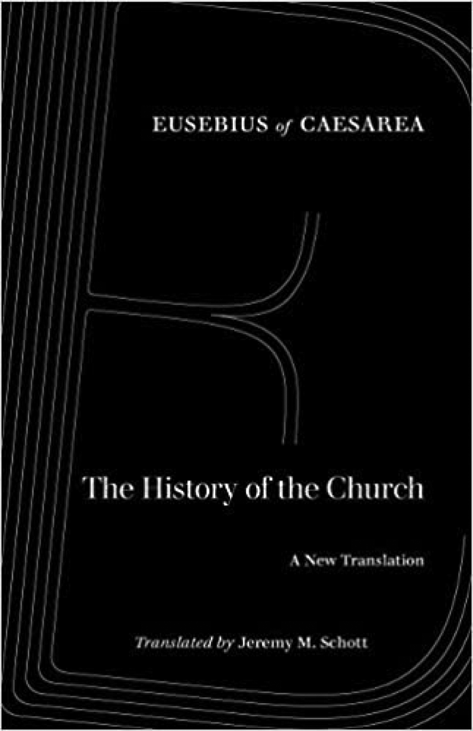
Eusebius’ Ecclesiastical History, recounting in Greek the history of the Christian Church from Jesus Christ to the Emperor Constantine, is one of the most historically valuable works in the European literary tradition. It is also one of the more difficult ones for students, due to its complex, uneven narrative style and frequent, extensive quotation of (now lost) earlier historical sources.
Students of the ‘Christian Herodotus’ have generally had to rely on G.A. Williamson's translation for Penguin (1965/1990), which, while elegant and reliable, lacks the sort of supplemental apparatus to make the text really accessible to the modern student. Consequently, Eusebius’ History has been long overdue for a new translation with comprehensive notes for classroom and scholarly use.
Jeremy Schott's new translation for the University of California Press, containing just such an accessible translation and the requisite supplementary material for the college student, is thus a welcome event in the study of Early Church and Roman imperial history. Schott's translation is also a welcome companion to his forthcoming monograph, Eusebius of Caesarea: Textuality and Tradition in Late Ancient Christianity.
For reasons I'll make clear below, I think it is easily the best single volume edition of the Ecclesiastical History now available in English. As I do not have substantive criticisms of the present volume, I'll endeavour to show why it will, I think, become the definitive translation and edition of the Ecclesiastical History for scholarly and classroom purposes. (Others have spoken to its achievement qua translation; here I note its impact for the general reading public.)
I'll start with a bit of background on Eusebius’ History, say more about Schott's achievements in this edition, and conclude with some notes on its classroom effectiveness.
Eusebius’ Ecclesiastical History (traditionally Historia Ecclesiastica) is our principal historical source detailing the early years of the Christian Church in the eastern Mediterranean. (One of the criticisms of Eusebius is his relative ignorance of Christianity's emerging Latin dimension in the Roman West.)
In it, Eusebius charts the parallel history of the successive regimes of Roman emperors and their provincial governors in the Roman East and the accession of the ecclesiastical government of the Eastern Church. The Church begins with Jesus, spreads under the proselytising of the Apostles and the sacrifices and persecution of the martyrs under Rome, and eventually organises around ancient urban episcopacies in the Greek-speaking East and in Rome itself.
The Roman empire, in contrast, undergoes successive convulsions of insurrection and invasion, resulting in infighting that threatens to tear the empire in two.
In a climactic conclusion to his history, Eusebius combines the narrative of these two parallel polities in Constantine's military and political triumph, on the one hand, and his conversion to Christianity (in hoc signo vinces), on the other, completing a synthesis of Rome and the Christian Church.
The Ecclesiastical History, then, presents a rich, unparalleled source for Early Church and Roman imperial history and a vivid contemporary account of how late ancient Romans made sense of the Constantinian ascendancy.
But its importance has not necessarily translated into sustained scholarly engagement or, even, much student interest. For while it has been a busy season for Eusebian studies since the publication of T.M. Barnes’ Constantine and Eusebius (Harvard UP 1981), most commentators have focused on other parts of Eusebius’ many-faced oeuvre, elaborating on Eusebius as apologist and dogmatist. This might be due to the uneven, complicated structure for the Ecclesiastical History and its heavy use of quotation from other (often lost) sources. This makes the text confusing for the general reader and scholar alike.
And so Schott's contribution in the form of a readable, well-introduced translation with extensive, helpful notes is a seminal event in scholarship of the Early Church.
In addition to the translation and notes, Schott has included a spectacular 30-page introduction pitched for the general reader, an introductory overview that includes parallel ancient Christian and ‘pagan’ sources for the dates covered in Eusebius’ chronology, extensive notes, two helpful appendices, and an excellent bibliography.
Together, these make for a singular achievement in Eusebian studies. I anticipate this volume will become the standard translation, and generations of students and teachers will appreciate Eusebius through this edition.




